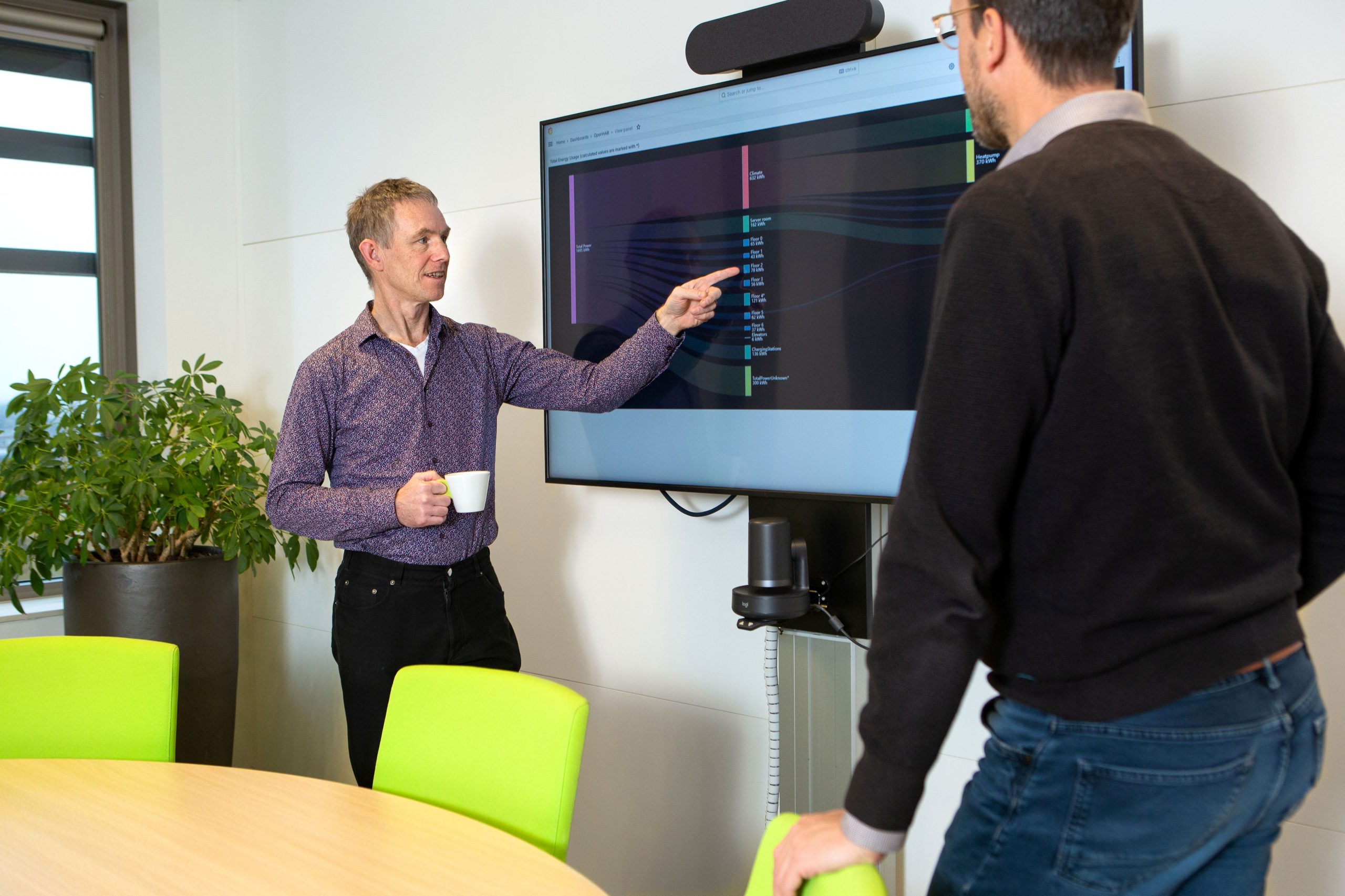
Energy management benefits everyone
Technolution has been committed to sustainability and corporate social responsibility for years. We were one of the first ICT companies to reach the highest level of the CO2 Performance Ladder. But we see sustainability and CSR as more than just internal goals – they are inextricably connected with our commitment to speeding up the energy transition. Energy awareness and technological innovation go hand in hand in implementing this. We use smart energy management solutions to manage demand and supply, not only for clients but also within our own organization.
Our own energy consumption
Energy management is not so much about reducing energy consumption but about making it more efficient. It helps restore the balance between supply and consumption. The result is a lower grid load, and often the net energy consumption drops. This is a positive contribution to the energy transition.
Energy management always begins with getting a clear picture of the current situation. Within our own organization, this began with a number of committed colleagues studying the efficiency of our own energy economy. They placed measuring instruments on all floors of our head office in Gouda. The results were collated and transformed into clear visualizations on our intranet. Sharing this knowledge in itself helped to raise energy awareness within our organization.
Big consumers: climate control, servers and EVs
The measurement readings quickly showed what our big energy consumers were. The biggest was our climate system, which cools the office in summer and warms it in winter. Consumption in the office, the kitchen, and testing rooms was also significant, and a lot of power went into charging electric vehicles. One of the questions we asked ourselves was: do we ever exceed the contracted transport capacity (CTC) that we have agreed with the grid operator? The answer was: sometimes we do. The charging stations for the electric vehicles in our parking garage in particular caused temporary overruns of the CTC under specific circumstances.
From awareness to specific measures
This insight was the first step. Balancing out energy consumption was the second. One of our first measures was to introduce technical changes to the charging process of the electric vehicles. By actively controlling the charging stations it became possible to reduce demand peaks, which means that the charging stations are allocated less power. The consequences of peak shaving are that some cars will charge more slowly, though they will still be fully charged by the end of the day.
Using internal experience externally
Controlling charging stations is just one of the possibilities of energy management. Other devices and machines can similarly be controlled using energy management. This is what we are currently developing for many clients. The solutions we are working on involve reducing lighting intensity depending on available daylight, or increasing or decreasing production to match peaks and troughs in the energy supply.
System integration is crucial to this: sensors and measuring devices provide data, which are monitored and analyzed by an energy management system (EMS). In the ideal world, the EMS would then control all connected systems that consume energy to manage and, if possible, reduce energy consumption. But for this to happen, a lot of (preferably standardized) interfaces still have to be developed. It’s a challenge that we, as an experienced system integrator, are eager to rise to!



